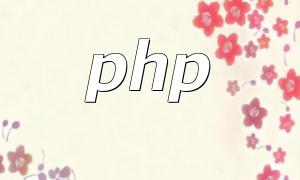Redis is an open-source in-memory data structure store that supports multiple data structures such as strings, hashes, lists, sets, and more. It also provides message subscription and publishing functionality, allowing clients to subscribe to specific channels. When a message is published to a subscribed channel, all client subscribers will receive the message. This article will demonstrate how to implement Redis message subscription and continuous listening in PHP.
Before using the Redis extension, you need to install it first. You can install it via PECL by running the following command:
If you don't have PECL installed, you can install it with this command:
Once the Redis extension is installed, the next step is to connect to the Redis server. Use the connect method provided by the Redis class to establish a connection. Here's an example:
In the above code, the first parameter of the connect method is the IP address of the Redis server, and the second parameter is the port number. Upon a successful connection, it will output "redis connected".
After connecting to Redis, you can start subscribing to message channels and handle the messages. Redis provides two methods for subscription: subscribe and psubscribe.
The subscribe method subscribes to one or more specified channels. Here's an example:
In this code, the first parameter of the subscribe method is an array of channels, and the second parameter is a callback function that handles the received message.
The psubscribe method allows you to subscribe to multiple channels using wildcards. Here's an example:
The above code subscribes to all channels starting with 'channel.'.
After subscribing to channels, you need to continuously listen to these channels to process incoming messages in real-time. This can be achieved by using a while loop. Here's the code to implement this functionality:
In this code, the while loop continuously uses the ping method to check the Redis connection status and sleeps for 1 second between iterations.
Here is a full PHP example that demonstrates subscribing to Redis messages and continuously listening for updates:
Through this article, we have learned how to use the Redis extension in PHP to continuously listen to Redis message subscriptions and process the received messages. We demonstrated how to use the subscribe and psubscribe methods to subscribe to channels, how to use a while loop to keep listening for new messages, and how to handle messages using a callback function to ensure real-time message processing.









